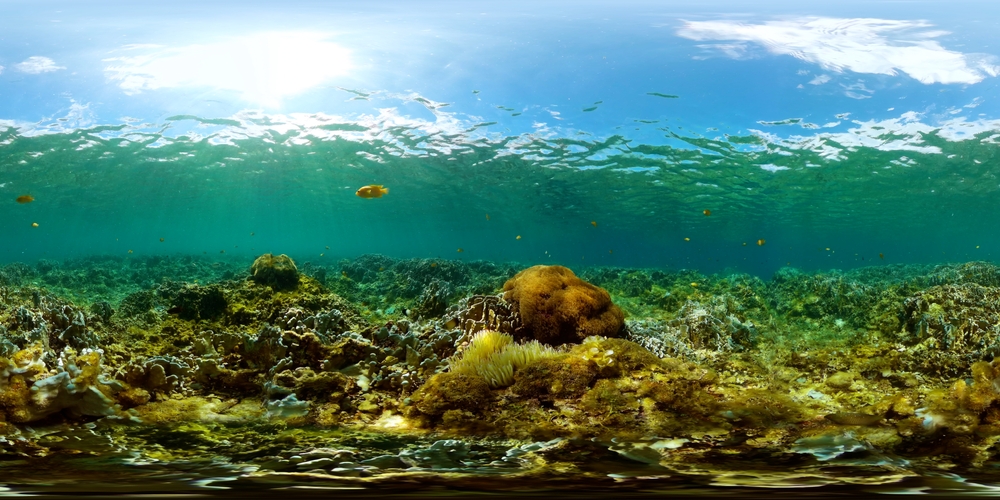The world’s oceans are warming at an alarming rate, with 2023 marking a critical milestone. For the first time, global ocean temperatures surpassed 1°C above pre-industrial levels, triggering marine heatwave events across both hemispheres.
These extreme temperature spikes were seen from Japan and South America to the North Atlantic. As the climate crisis worsens, marine heatwaves are becoming more frequent and intense, posing a serious threat to marine ecosystems, economies, and coastal communities worldwide.
What are marine heatwaves?
Marine heatwaves are periods of unusually high sea surface temperatures lasting at least five days. These heat events can vary in size from localised hotspots to vast stretches of ocean basins.
While many last for weeks, some have persisted for months or even years in extreme cases. These prolonged temperature spikes disrupt marine environments, often leading to catastrophic consequences for marine biodiversity and coastal industries.
Global impact on ecosystems and economies
The impact of marine heatwaves extends far beyond the ocean. In tropical regions, coral reefs—critical to marine life and coastal economies—have experienced widespread bleaching.
This coral loss significantly harms tourism. Additionally, many fisheries around the world have been devastated, with mass fish die-offs or migrations disrupting local economies and food supplies.

Marine heatwaves also destroy entire underwater ecosystems, such as seagrass meadows and kelp forests. These habitats are essential for capturing carbon and combating climate change.
Their destruction weakens the planet’s ability to regulate climate and threatens the biodiversity that depends on them.
Rising marine heatwaves in the UK
The UK has traditionally been spared the worst marine heatwaves seen in other parts of the world. However, in June 2023, the UK experienced a short but intense marine heatwave around its shores.
While widely reported in the media, the full extent of the damage remains unclear, highlighting the need for more research into the potential impacts of such events on UK marine ecosystems and the blue economy.
New research published in Frontiers in Marine Science has revealed that marine heatwaves around the UK are regionally variable. The southern North Sea and English Channel experience longer, moderately intense heatwaves, with sea temperatures rising up to 1.5°C above average.
On the other hand, the eastern North Sea sees shorter but more intense events, with temperatures surpassing 3°C above expected levels.
High variability in UK waters
Marine heatwaves around the UK vary significantly in terms of location, intensity, and duration. Some events have lasted up to five months and can occur year-round, even in winter.
This variability also affects biological responses. Research has shown that extreme sea temperatures don’t always align with chlorophyll-a concentrations, a proxy for phytoplankton abundance, which adds complexity to understanding the ecological effects of these heatwaves.
Interestingly, the southern North Sea experiences more frequent ‘greenwaves,’ periods of high phytoplankton productivity, while tropical regions are more prone to ‘bluewaves,’ marked by low productivity.
However, the relationship between temperature extremes and biological changes in the UK’s waters remains inconsistent and requires further study.
The role of seasonality
The timing of marine heatwaves plays a crucial role in determining their impact. If a heatwave hits during the summer, it can push species like seagrass or kelp beyond their thermal limits, leading to widespread die-offs.
However, if a heatwave occurs in winter or spring, it could trigger early phytoplankton blooms, which might temporarily boost fisheries but also cause harmful algal blooms.
In shallow waters such as the southern North Sea, marine heatwaves have been linked to dangerously low oxygen levels near the seabed, putting benthic ecosystems under extreme stress.
This issue is especially prevalent during the first half of the year when water layers are well-mixed, allowing the effects of heatwaves to reach the ocean floor.
Preparing for future marine heatwaves
The June 2023 marine heatwave serves as a warning for the UK, demonstrating that these events are becoming more common and severe.
This presents a critical opportunity for the UK to invest in research and monitoring to better understand the future impacts of marine heatwaves on ecosystems, fisheries, and coastal communities.
By identifying high-risk areas and strengthening the resilience of vulnerable species and industries, the UK can learn from other nations and better prepare for the increasing threat of marine heatwaves.
These extreme events are a clear signal that ocean health is deteriorating, and urgent action is needed to protect marine ecosystems and the economies that rely on them.





